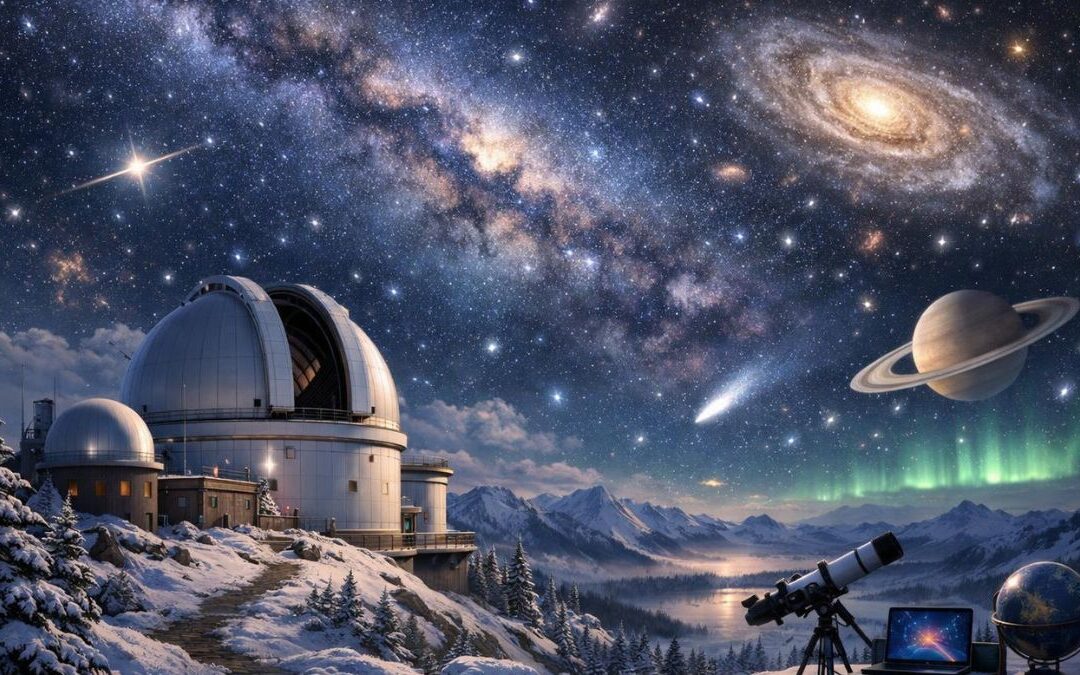There’s something magical about geysers. They seem to erupt out of nowhere, sending boiling water and steam skyward in a powerful display of nature’s force. But geysers aren’t just a random act of nature—they’re the result of specific geological conditions that come together to create these natural water heaters. In this article, we’ll take a closer look at how geysers work, where you can find them, and why they’re such a rare phenomenon on Earth.
How Geysers Work
At the heart of every geyser is a delicate balance of water, heat, and pressure. Rainwater or snowmelt seeps underground, where it collects in deep reservoirs. Below the surface, magma—molten rock from Earth’s mantle—provides the heat source. As the water in these underground chambers heats up, it turns into steam, increasing the pressure. But instead of escaping immediately, the water stays trapped, held in place by rock formations above.
Eventually, the pressure builds to a tipping point, and the steam forces the water up through narrow channels, creating the spectacular eruptions we see on the surface. Once the pressure is released, the geyser calms down—until the process starts all over again. This cycle can take minutes, hours, or even years, depending on the geyser.
Where Can You Find Geysers?
Geysers are rare because they require very specific conditions—heat from magma, water, and the right kind of underground plumbing to create pressure. As a result, only a few places on Earth have active geysers. One of the most famous geyser regions is Yellowstone National Park in the United States, home to Old Faithful, a geyser known for its predictable eruptions. Iceland also boasts impressive geysers, including the Great Geysir, which gave all geysers their name. New Zealand’s geothermal regions are another hotspot, with geysers like Pohutu erupting regularly.
Why Are Geysers So Rare?
While hot springs and geothermal activity are common in many volcanic regions, not every geothermal feature becomes a geyser. The right combination of heat, water, and pressure is tricky to achieve. Many geothermal areas lack the narrow channels needed to trap and release pressure. Others might have the heat but not enough water to fuel eruptions. This makes geysers a rare and unique phenomenon, adding to their mystique and appeal.
Geysers and Geothermal Energy
Beyond their beauty, geysers and geothermal areas also have practical uses. Many countries, including Iceland and New Zealand, use geothermal energy to generate electricity and heat homes. By tapping into the Earth’s natural heat, these countries reduce their reliance on fossil fuels and take advantage of a sustainable energy source. While geysers themselves aren’t used directly for energy production, the geothermal systems that create them are an important part of the world’s renewable energy landscape.
The Eruption Cycle: Predictable and Unpredictable
One of the fascinating things about geysers is how unpredictable they can be—except for a few exceptions like Old Faithful, which erupts about every 90 minutes. But even these predictable geysers can change over time, with intervals shifting due to earthquakes or underground shifts. Other geysers are much less predictable, erupting randomly or going dormant for years before coming back to life.
Geyser Tourism: Seeing Nature’s Power Up Close
If you’ve ever had the chance to see a geyser erupt, you know it’s an unforgettable experience. The sound of the water rushing to the surface, the sudden spray of steam, and the sheer power of the eruption can leave you in awe. Geyser tourism is popular in places like Yellowstone and Iceland, where people gather to watch these natural wonders in action. However, visitors are reminded to stay on marked paths and follow safety guidelines—geysers are powerful and unpredictable, and the water they release is boiling hot.
Geysers are more than just a geological curiosity—they’re a reminder of the incredible forces at work beneath our feet. These natural water heaters showcase the perfect combination of water, heat, and pressure, creating stunning eruptions that captivate onlookers. While they may be rare, the beauty and power of geysers offer a glimpse into the dynamic processes shaping our planet. So the next time you watch a geyser erupt, take a moment to appreciate the science behind the spectacle and the natural wonder unfolding before your eyes.
Let’s Talk
So, geysers, huh? They’re basically nature showing off, aren’t they? I mean, just think about it—water heated deep underground by molten rock, building pressure until it explodes into the air like Earth’s very own tea kettle. It’s kind of crazy to imagine all that’s happening under the surface, hidden from view, until—BOOM—there’s a blast of steam and water shooting skyward. But here’s the thing that really gets me: these explosions are both incredibly powerful and perfectly timed by nature. How cool is it that something so wild can also have a rhythm to it, like Old Faithful erupting every 90 minutes or so? It’s like Earth’s version of setting a reminder.
But what I find fascinating is how delicate the whole process is. If one element is off—maybe there’s not enough water, or the underground channels get blocked—then the whole thing doesn’t work. That’s probably why geysers are so rare. It’s not every day that you get water, heat, and pressure working in perfect harmony underground. It’s kind of like making the perfect soufflé—except the stakes are a lot higher, and the soufflé is thousands of gallons of boiling water. No pressure, right?
Speaking of pressure, have you ever thought about how geysers are a bit like life? Sometimes we keep things bottled up—stress, emotions, ideas—until they finally explode. And honestly, that’s not always a bad thing. Just like geysers, a little release now and then can be healthy. It’s when we let things build up too long without an outlet that things get messy. Maybe that’s why I admire geysers. They don’t hold back; they release the pressure and get on with the next cycle. There’s probably a life lesson in there somewhere.
And let’s talk about the unpredictability. Old Faithful might be the star of the show because it sticks to a schedule, but not every geyser is that reliable. Some go dormant for years and then suddenly spring back to life when no one’s expecting it. That unpredictability feels familiar, doesn’t it? Life’s full of surprises, and sometimes the things you think are over—like a dormant dream or a goal you gave up on—suddenly erupt when you least expect them. It’s a good reminder that even when things seem quiet, something might be brewing under the surface.
Another cool thing about geysers is how geothermal energy comes into play. Think about Iceland, where they harness the Earth’s natural heat to power homes and keep things running. It’s like Mother Nature’s way of saying, “Hey, why not use what’s already here?” It makes me wonder—what resources or talents are we sitting on that we’re not tapping into? Maybe we all have our own version of geothermal energy—something we could harness if we only knew how to use it.
And let’s not forget the tourism side of things. People travel from all over the world just to watch water explode out of the ground. There’s something mesmerizing about seeing raw natural power up close. But it also makes me think—do we take the smaller, quieter wonders of nature for granted because they’re not as flashy? Maybe it’s not just about chasing the next big thing but learning to appreciate the little things too. Not every moment has to be a geyser-level explosion to be meaningful.
So, what about you? Is there something in your life right now that feels like it’s building pressure, just waiting to erupt? Or maybe you’ve got something simmering quietly that you’ve been waiting to tap into, like a hidden talent or a long-forgotten goal. Either way, remember: just like a geyser, the release will come when the time is right. The key is knowing when to let it out—and maybe standing back a bit when it happens.
Let’s Learn Vocabulary in Context
Let’s dig into some of the interesting words and phrases from the geyser topic and see how they sneak into everyday life. First up is “eruption.” In the context of geysers, it’s about water shooting up into the air, but it works just as well for those moments when emotions boil over. “I had a little eruption in the meeting today—probably shouldn’t have let that comment get to me.” It’s a fun way to describe those sudden outbursts we all have from time to time.
Then there’s “pressure.” We talked about how pressure builds underground until a geyser explodes, and the same thing happens to us. “I’m feeling a lot of pressure to finish this project on time.” Whether it’s work, family, or self-imposed expectations, pressure is everywhere. Knowing when to release it—before things get messy—is the real trick.
“Cycle” is another useful word. Geysers go through natural cycles of building and releasing pressure. In life, we also have cycles—work cycles, sleep cycles, emotional cycles. “I’m in a productivity cycle right now, but I know it won’t last forever.” Understanding these rhythms helps us know when to push and when to rest.
We also talked about “dormant.” A dormant geyser isn’t erupting, but it’s still there, waiting for the right moment. People can feel dormant too, like when you have a passion or talent that’s been on hold. “My painting skills have been dormant for years—I think it’s time to pick up a brush again.” It’s a good reminder that just because something is quiet doesn’t mean it’s gone.
Then there’s “geothermal energy.” In the geyser context, it’s all about harnessing Earth’s natural heat, but in life, it’s a great metaphor for tapping into hidden potential. “I need to find my geothermal energy—something sustainable to keep me motivated.” Sometimes, the energy we need is already within us—we just need to figure out how to use it.
“Reservoir” also came up. It refers to underground pools of water, but we all have personal reservoirs too—like a reservoir of patience, kindness, or energy. “I need to tap into my patience reservoir today—it’s going to be one of those days.” It’s a handy way to describe inner resources that aren’t always visible but are definitely there.
We mentioned “channel” in the article, referring to the narrow passage that guides water to the surface. In life, a channel can be any way we direct our energy or focus. “I need to find a healthy channel for my stress—maybe yoga or journaling.” It’s about finding the right outlet to keep things flowing smoothly.
And let’s not forget “plumbing.” In geysers, the underground plumbing keeps everything in check, but in life, your personal plumbing is how you manage your emotions and routines. “I’ve got to fix my mental plumbing—too many things are clogging up my thoughts.” A little maintenance goes a long way, right?
Then there’s “unpredictable.” Not every geyser can be counted on to erupt at regular intervals, and life is the same way. “Life’s been unpredictable lately, but I’m learning to roll with it.” It’s about staying flexible, even when things don’t go as planned.
Finally, we have “natural wonder.” We used it to describe geysers, but it can also apply to people and moments in life. “That concert last night was a natural wonder—it left me speechless.” Sometimes, everyday experiences have their own magic if we know where to look.
So, what about you? Do you have any dormant dreams or talents waiting to erupt? And how do you handle life’s unpredictability—are you good at going with the flow, or do you prefer to plan everything out?











0 Comments